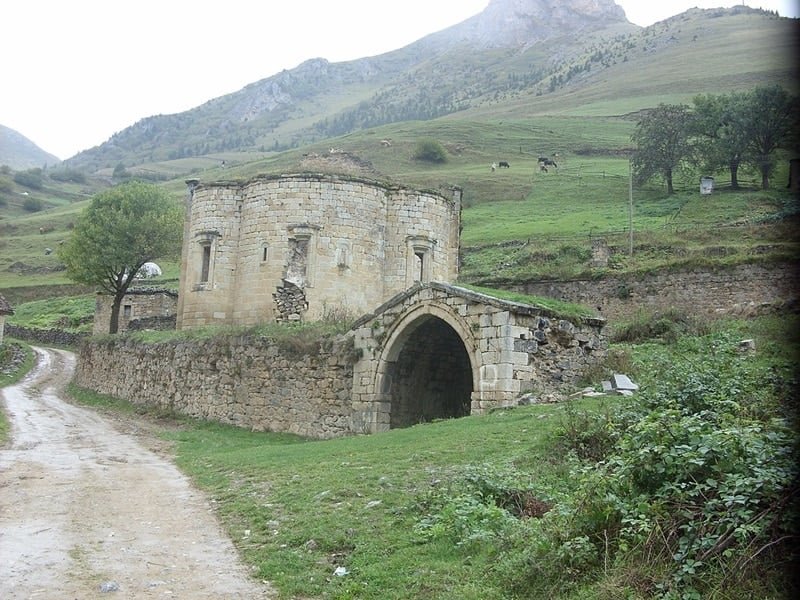
The village of Santa experienced one of the most harrowing episodes in the persecution of the Pontic Greeks during the final and most brutal phase of the Genocide after 1919.
Echoing the sorrow of an ancient Greek tragedy, this unspeakable event unfolded in the autumn of 1921, when Greek mothers in the town of Santa made a heartbreaking decision: to surrender their crying infants to death in order to save themselves and their community from annihilation by Turkish forces.
Santa under siege
Santa, a mountainous town located 45 km (28 miles) northeast of Trebizond, consisted of seven settlements and a population of 5,000 ethnic Greeks in 1919. Targeted early on in the genocide, many of its inhabitants fled to Trebizond and other relatively safer areas.
In 1918, to defend their homes and lives, the Greeks of Santa formed a well-organized guerrilla force led by Euclid Kourtides (1887–1937), a fearless leader renowned for his courage and leadership.
By the fall of 1921, Turkish forces had surrounded the town. With deportation to the interior of Asia Minor imminent, the residents, including women and children, fled into the surrounding mountains.
Night of terror in Santa epitomized the Pontic genocide
On September 21, 1921, a large force of Turkish regulars and irregulars (Chetas) launched an offensive to burn Santa and eliminate its population. A fierce battle erupted in the mountains.
In a diary entry, Kostas Kourtidis, brother of Euclid, described the night as the most terrifying of his life. Around 300 women and children took shelter in a cave guarded by 120 unarmed young men. As Turkish troops closed in, a narrow escape route through the forest remained their only hope.
However, one desperate problem remained: the infants. Their cries could betray the group’s location and doom everyone. With no other option, the guerrillas made an unthinkable decision. Mothers—silent, terrified, and desperate—handed over their infants to be killed, sacrificing seven babies so that the rest might live.
“Many of the women, unable to quiet their children and unwilling to leave them behind, killed them on the spot,” wrote Kourtidis in his diary.
When Turkish forces later found the bodies of the infants, they were so shocked that the commanding officer reportedly ordered a full retreat, saying, “People who kill their own children cannot be caught. There is no point in remaining here.”
The aftermath and legacy
Though many escaped that night, Santa’s ordeal was far from over. Two subsequent waves of deportations sent its remaining residents into the deadly interior of Asia Minor. Meanwhile, Euclid Kourtides and his fighters continued their resistance from the mountains.
By 1924, the surviving villagers of Santa—battered and broken—arrived in Greece as refugees. Most settled in Kilkis, founding the village of Nea Santa. Among them was Captain Euclid Kourtides, remembered until his death in 1937 as a symbol of defiance and dignity.
Eleni Nymfopoulou-Pavlidou has given voice to this tragic event in her writing, while Takis Vamvakidis and composer Dimitris Piperidis have preserved it through music and narration, ensuring that the sacrifice of Santa’s infants will never be forgotten.
Related: Santa: The Ruins of the Deserted Greek Town in Pontus


